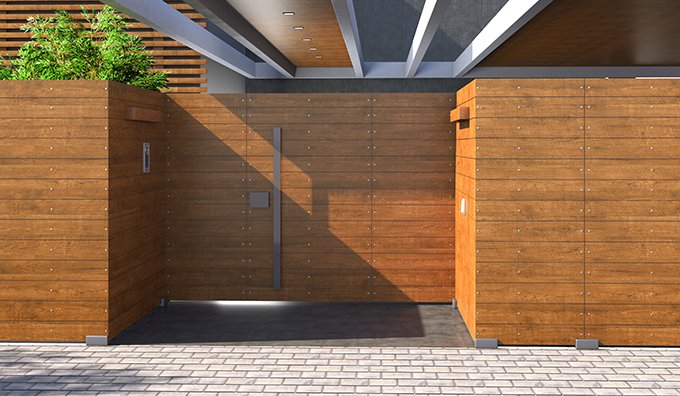Property value and visual impact depend heavily on exterior design choices that create lasting impressions on potential buyers, neighbors, and visitors. Smart selection of exterior cladding wall panels requires balancing aesthetic preferences with technical performance, maintenance requirements, and local climate considerations. Understanding how different materials, colors, textures, and installation patterns influence overall appearance helps homeowners and designers make informed decisions that enhance property appeal while ensuring long-term satisfaction and minimal upkeep costs.
Color Selection and@ Neighborhood Context
Color psychology plays a significant role in exterior appeal, but practical considerations often override personal preferences. Darker colors absorb more heat, potentially causing greater thermal expansion and higher cooling costs in warm climates. Light colors reflect heat but may show dirt and weathering more readily.
Neighborhood character influences appropriate color choices. While personal expression matters, dramatic departures from local aesthetic norms can negatively impact property values. Study successful renovations in your area to identify color palettes that enhance rather than detract from community appeal.
Regional climate affects color longevity differently. UV exposure in northern latitudes differs substantially from southern regions, influencing fade rates and maintenance requirements. Some pigment systems maintain color stability better in specific climate zones, making manufacturer recommendations valuable for long-term satisfaction.
Texture and Pattern Considerations
Surface texture dramatically influences visual perception and maintenance requirements. Smooth finishes create contemporary appearances but highlight surface imperfections and require frequent cleaning to maintain their appearance. Textured surfaces disguise minor flaws and weathering but can accumulate dirt in recessed areas.
Panel orientation affects building proportions and visual impact. Horizontal installation creates broader, more contemporary appearances, while vertical patterns emphasize height and create more traditional aesthetics. Mixed orientations can define architectural features and add visual interest.
Reveal spacing between panels influences shadow lines and overall texture perception. Wider reveals create bold, contemporary appearances but may collect debris and require more maintenance. Narrow reveals provide subtle definition while minimizing cleaning requirements.
Material Performance vs Aesthetic Goals
Different cladding materials offer distinct aesthetic characteristics alongside varying performance attributes. Natural timber provides warmth and character but requires regular maintenance to prevent weathering and decay. Composite materials offer wood-like appearances with reduced maintenance but may lack the authentic texture variations of natural materials.
Fibre cement products provide extensive design flexibility through various surface treatments and profiles. Factory-applied finishes ensure consistent appearance and often include warranties that site-applied coatings cannot match. However, these systems may limit future color change options.
Metal cladding systems offer exceptional durability and clean, modern aesthetics. However, thermal expansion and contraction can create noise issues and require specific design considerations for fastening and sealing details.
Integration with Architectural Features
Successful cladding selection complements existing architectural elements rather than competing with them. Window trim, rooflines, and foundation materials should coordinate with cladding choices to create cohesive overall appearances.
Scale relationships matter considerably. Large-format panels suit contemporary architecture but may overwhelm traditional building styles. Conversely, small-scale materials can appear busy on large facades but provide appropriate detail for intimate residential settings.
Corner treatments significantly impact overall appearance quality. Some cladding systems include matching corner trim pieces, while others require custom solutions that can become expensive or aesthetically compromising if not properly planned.
Lighting and Shadow Effects
Panel profile depth affects shadow patterns throughout the day, influencing visual interest and perceived texture. Deep profiles create dramatic shadow lines but may collect debris and require more frequent cleaning. Shallow profiles maintain cleaner appearances but provide less visual depth.
Building orientation influences how cladding appears under different lighting conditions. North-facing surfaces receive consistent, indirect light that reveals color and texture subtleties, while south-facing areas experience dramatic lighting changes that can either enhance or detract from cladding choices.
Artificial lighting integration requires planning. Some cladding systems accommodate integrated lighting features better than others, and retrofit installations often compromise system integrity or create maintenance challenges.

